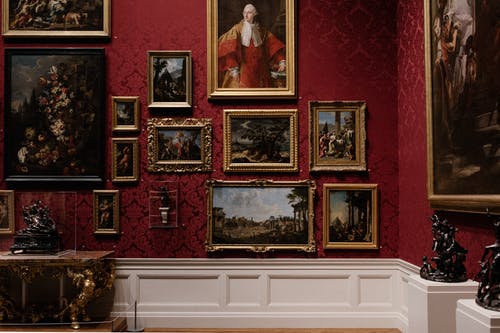In recent years, the art market has become one of the most profitable and fruitful investment areas. Сollecting fine art seems like an appealing and satisfying activity that brings plenty of benefits in the long run. For that reason, the number of would-be art investors exponentially grows each year. While this is a pretty normal and natural tendency, many novices, blinded by a desire to earn money, do not fully understand what they do in the first place.
Art investment is not smooth sailing, and if you do not do your homework and get prepared for upcoming difficulties, you will hardly achieve much more than mediocrity. Knowing how to invest in art is not enough; it is more crucial to realize what pitfalls and common mistakes are waiting for you on your way. Only then can you start building your art investment strategy.
So, what pitfalls should you know? And how to avoid them? Let’s take a look!
5 pitfalls of art investment and how to avoid them
1. Buyin from shady art dealers
Art investment is worthwhile only when you buy original works of art, be them paintings, drawings, or other artworks. This is when you understand you need a reliable seller, an experienced art dealer, or a reputable art gallery. Nowadays, different marketplaces allow you to buy art directly from artists, which is definitely a good idea for those who prefer online shopping.
The common mistake, in this case, is cutting your own budget. This may lead to an attempt to find cheaper alternatives and, as a result, to some unscrupulous dealers who do have some dirty-cheap artworks for sale. There are mainly two problems with this approach. First, you never know whether you buy originals or fakes and copies. Second, you can simply buy stolen art, which is a pretty widespread issue nowadays. The verdict is simple: don’t cut corners.
2. Not understanding what you want to buy
Surprisingly or not, the rule “buy what you love” does work. There is a myriad of items you can collect. If you focus on something that is only trendy and will allegedly bring you money in the future, you probably won’t be happy with the outcome. At the end of the day, art investment is not only about money but also about the inner pleasure and joy that you get.
Before you start collecting art, make time to find something that fills your heart with bliss and exhilaration. The choice is vast, so you don’t need to limit yourself. You might well like some traditional American art, Russian Orthodox icons, or Tibetan antique statues. Don’t believe slogans and advertisements — it’s only you and your preferences.
3. Not questioning your incompetence
Confidence is a strong and positive virtue, but only when it is not exaggerated. You must acknowledge that you are a novice who still has to learn a lot about the investing strategies and art market in general. If you feel like you lack experience in certain situations and need help, it is perfectly normal.
When people feel overwhelmed, they tend to make stupid mistakes. To avoid them, it is always better to take a pause and wind down. In case you are super motivated and are not ready to stop, you should consider hiring an art investment advisor, a specialist who will guide you through all the steps. With the help of an expert, art investment will become markedly easier, as you are going to attribute part of your responsibilities to a qualified person.
4. Focusing on monetary gain only
The impact of a strong focus on money has been repeatedly mentioned above, so, hopefully, the lesson is learned. It doesn’t, though, mean that monetary gain is bad or evil. Investment is all about benefits, after all. However, art is a more sophisticated form of investment, where you should find the fine line between what you like and what brings prospects in the days to come.
Again, the common pitfall is building your collection around art based on its cost. In reality, the cost of some artworks is subject to change on a regular basis, so money hunting in the art business is usually irrelevant or, at least, counterproductive.
5. Providing art with insufficient care
Art requires care and love, so when you buy valuables, you should always think one step ahead. To provide maximum safety to your art, starting collectors should remember some basic rules of art protection, such as avoiding direct sunlight and keeping a humidity level low. Also, consider getting art insurance that will save you money if anything nasty happens to your artworks.
Learn from mistakes before making them
Knowing these common pitfalls and mistakes will save you a good deal of time, money, and energy. Art investment should not be a burden but a rewarding journey that you will never forget. Good luck!



 Bitcoin
Bitcoin  Ethereum
Ethereum  Tether
Tether  XRP
XRP  Solana
Solana  USDC
USDC  TRON
TRON  Lido Staked Ether
Lido Staked Ether  Cardano
Cardano  Avalanche
Avalanche  Toncoin
Toncoin